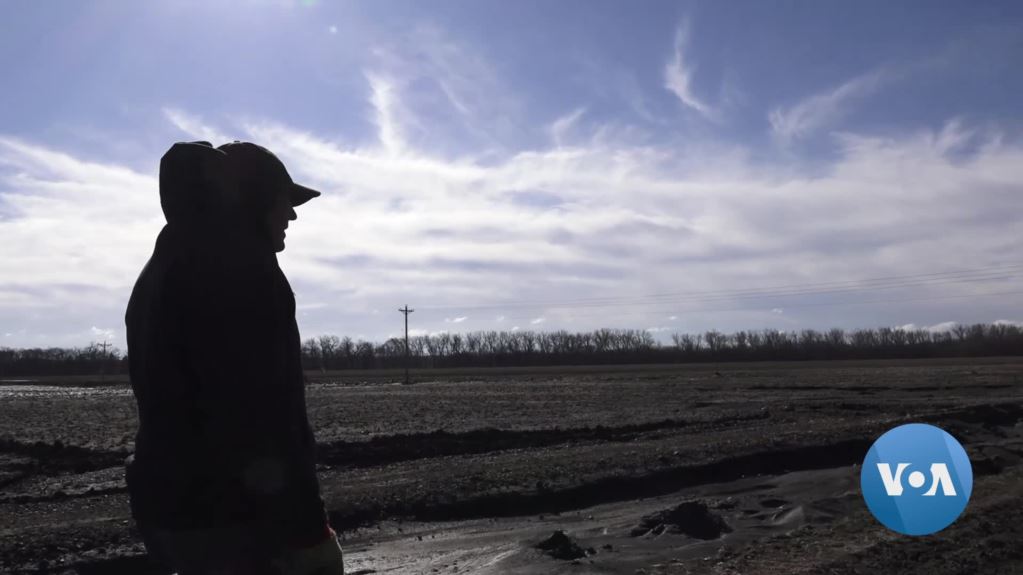Midwest Farmer ‘In a Daze’ at What Devastating Flood Left Behind

VOA NEWS- Elizabeth Lee

HOOPER, NEBRASKA — Tom Geisler has experienced many ups and downs in his 43 years of farming, as weather sometimes helped and often hurt his livelihood. But he was not prepared for what Mother Nature brought this spring.
“Never had anything like this before. Not this kind of a flood,” said Geisler, who is still in a daze and trying to grasp all his losses.
In March, melting snow from a harsh winter combined with a “bomb cyclone” storm caused historic flooding in the fields and communities across the Midwest.
Geisler cultivates corn, soy beans and hay, and raises cattle on 162 hectares (400 acres) of his family’s farm near Hooper, Nebraska. The water has mostly receded, but it left a mess in his fields, and his 134-year-old farm house is unlivable.

Bad timing
In 10 minutes, Geisler said, water filled his basement and crept into his home. During the worst of the flood, he helplessly listened as his recently born calves cried in distress.
“(They were) bawling all night. Just about made us heartbroken, but they survived. I thought they’d be gone,” Geisler remembered. “(I) couldn’t even get to my calves. It was five foot (1.5 meters) deep out there. I couldn’t even feed them. Two calves are completely gone. They floated away and two cows died.»
Timing is bad since it is calving season. Geisler hopes the rest of his cattle recover from the stress of standing in icy water for long periods of time. As for his land, after it dries up, he will have to clear some areas of sand deposits before he can start planting late in the growing season this spring. He estimates the floods did $100,000 in damages to the fences around his farm.
“We lived on this place for 32 years since I’ve been married to my wife, Frances. … My mother’s been at her place all of her life. She’s 90 years old, and she’s never seen anything like this, either.”
Extreme weather
Geisler said in the last three years, the weather has been more wet and “extreme” and the storms are “getting intense.”
“We haven’t had a good week of weather since the first week of August of last year. It’s been raining every one or two days every week since then,” he said.
He said over the course of 40 years, farmers may have made the problem worse by switching to row crops like corn instead of grass, alfalfa and small grains such as wheat to feed cattle.
“Now, it’s almost all row crops, so a lot of the water just runs off. I think that has affected our flooding quite a bit.” Geisler explained. “Just really be nice if we all had a patch of grass to hold some water back. Too much land has been highly erodible that’s in row crops right now, I think.”
About six years ago, many farmers replaced grass with corn because of the demand for ethanol and an “excellent” export market, Geisler said.
He pointed to topsoil that had washed away from the fields. He said it takes 100 years to make an inch (2.54 cm) of topsoil, and “probably half an inch is gone. So, that’s 50 years worth of soil.”
One day at a time
Geisler said he will work on repairing the flood damage one day at a time. His younger son, a future farmer, will help.
“We’ve always been resilient, so hopefully we can come back (and) farm some more. I’m the fifth generation of farmers, so hopefully we can continue that trend. I don’t want to give up. Sometimes you feel like it, but I don’t want to.»

